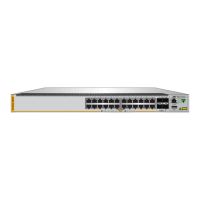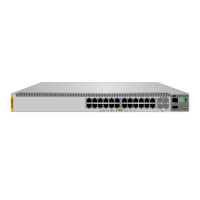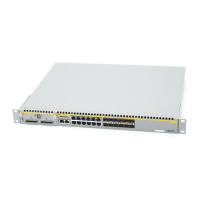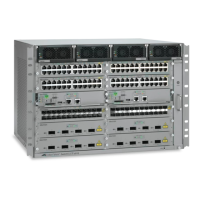Chapter 1: Overview
34
Note
Switch ports default to half-duplex mode when connected to 10Mbps
or 100Mbps network devices that do not support Auto-Negotiation. If
a network device supports full-duplex only, a duplex mode mismatch
can occur, resulting in poor network performance. To prevent this,
disable Auto-Negotiation and set the duplex mode manually on ports
connected to 10Mbps or 100Mbps devices that support full-duplex
only.
Wiring
Configuration
The wiring configuration of a port operating at 10Mbps or 100Mbps can be
MDI or MDI-X. The wiring configurations of a switch port and a network
device connected with straight-through copper cabling must be opposite,
such that one device is using MDI and the other MDI-X. For example, a
switch port must be set to MDI-X if it is connected to a network device set
to MDI.
The wiring configurations of the ports can be set manually or automatically
by the switch with auto-MDI/MDI-X (IEEE 802.3ab-compliant). This feature
enables the switch to automatically negotiate with network devices to
establish their proper settings.
The MDI and MDI-X settings do not apply when ports are operating at a
speed of 1Gbps or higher.
Maximum
Distance
The ports have a maximum operating distance of 100 meters (328 feet).
Cable
Requirements
The minimum copper cable requirements are as follows:
10/100Mbps ports: Standard TIA/EIA 568-B-compliant Category 3
unshielded cabling
1Gbps ports: Standard TIA/EIA 568-A-compliant Category 5 or
TIA/EIA 568-B-compliant Enhanced Category 5 (Cat 5e)
2.5/5Gbps ports: Standard TIA/EIA 568-A-compliant Category 6 or
TIA/EIA 568-B-compliant Category 6A (Cat 6A) unshielded cabling
Port Pinouts Refer to Table 35 on page 197 for the port pinouts of the 100Mbps and
1/2.5/5Gbps copper ports.

